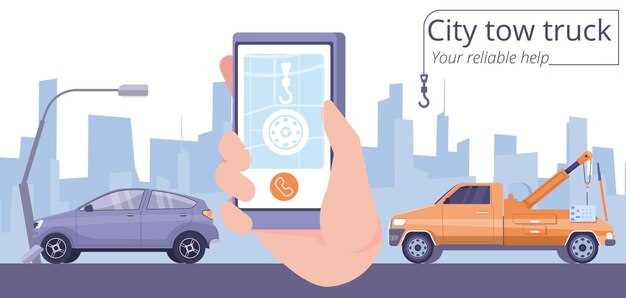
Transporting a broken car can be a daunting task, especially if you’re unfamiliar with the best practices involved. When a vehicle is inoperable, finding the right shipping option becomes crucial to ensure both safety and efficiency. It’s important to consider the various methods available for shipping a non-working vehicle, as each has its own advantages and limitations.
Using a professional towing service is often the most reliable option for moving a broken car. Towing companies have the necessary equipment and experienced drivers to handle cars that cannot drive themselves. However, if budget constraints are a concern, there are also alternatives such as flatbed transport and car haulers, which can provide a safe way to ship your vehicle without additional wear and tear.
Another essential factor in choosing a shipping method is ensuring that your broken car is secured properly during transportation. This involves understanding the specific requirements of the carrier you choose and preparing your vehicle accordingly. Whether you opt for a specialized car shipping service or a standard towing solution, being informed about the process will help you make the best decision for your needs.
Choosing the Right Transport Option for Your Inoperable Vehicle

When dealing with a broken car, selecting the appropriate transport option is crucial for ensuring safety and efficiency. Here are several options to consider:
- Tow Truck Services
Tow truck services are a reliable choice for transporting inoperable vehicles. They can handle various types of breakdowns and ensure your car is moved safely.
- Flatbed Trailers
Flatbed trailers are ideal for non-running cars as they provide a stable platform for transport. This method minimizes the risk of further damage during loading and unloading.
- Car Shipping Companies
Many car shipping companies specialize in transporting broken vehicles. They often offer door-to-door service and various shipping options, including open or enclosed transport.
- Self-Transport Methods
If you have the necessary equipment, you might consider transporting your vehicle yourself. Options include renting a trailer or using a dolly, but ensure you have adequate experience.
- Local Mechanic Services
Some local mechanics offer transportation services for broken vehicles. This option can be convenient if you plan to have repairs done at the same location.
Consider the following factors when making your choice:
- Distance: The farther the distance, the more important it is to choose a reliable transport option.
- Cost: Evaluate the cost of various transport services to find one that fits your budget.
- Insurance: Ensure that the transport option provides adequate insurance coverage for your broken vehicle.
- Timing: Consider how quickly you need the car transported. Some services might offer faster options than others.
By carefully evaluating these transport options and factors, you can ensure the safe and efficient movement of your inoperable car.
Preparing Your Car for Safe Transport: Steps to Follow
When dealing with a broken car, it is essential to prepare it properly for transport to ensure safety and prevent further damage. The following steps will guide you through the process.
First, assess the condition of your vehicle. Determine if any parts are leaking fluids or if there are any visible signs of damage. Addressing these issues upfront can prevent hazards during transport.
Next, remove any personal belongings from the car. Check inside the glove compartment, trunk, and under the seats for any items that could be damaged or lost during transport.
Once the car is cleared of personal items, document its current state. Take photos of the exterior and interior, noting any existing damages. This documentation can be useful in case of disputes with the shipping company.
After documentation, ensure that the car is securely locked and that all windows are closed. This precaution helps to keep your vehicle protected during transit.
If your car is not operational, inform the transport company about its broken condition. They may require specific equipment, such as a flatbed truck, to safely load and transport your vehicle.
Finally, confirm the transport arrangements and review all necessary paperwork. Ensure you understand the terms regarding insurance, potential damages, and delivery times. Addressing these details will contribute to a smooth shipping experience.
Understanding Costs and Insurance for Shipping a Non-Running Car

Shipping a broken or non-running car involves several costs that are important to consider. The overall expense is influenced by factors such as distance, type of transport, and the specific condition of the vehicle. Typically, using a flatbed truck for transport is recommended for non-running cars due to its ease of access. This method, however, may incur higher fees compared to standard towing services.
Distance is a significant factor in determining the shipping cost. The longer the transport route, the higher the price will be. Many shipping companies charge on a per-mile basis, so if you’re moving your broken car across state lines, these fees can add up quickly.
Another important aspect to consider is insurance. When shipping a non-running vehicle, it’s essential to verify the insurance coverage provided by the transport company. Most reputable carriers offer basic insurance that covers damages during transport, but this may not fully cover the value of your car. Opting for additional coverage can provide peace of mind, particularly for high-value or vintage cars.
Additionally, always read the fine print in the shipping contract. Some companies may charge extra for handling non-running vehicles or have specific requirements for loading and unloading. Understanding these clauses can help avoid unexpected costs.
Overall, careful planning and awareness of both shipping costs and insurance provisions can make the process of transporting a broken car more efficient and secure. Whether for repair or relocation, proper budgeting for these variables is essential to ensure a smooth experience.


